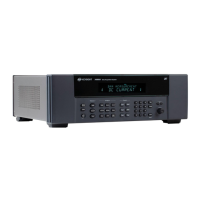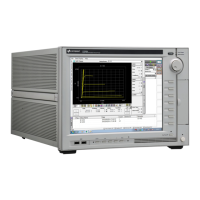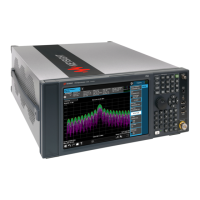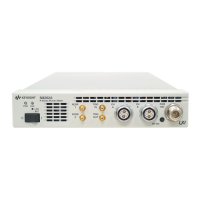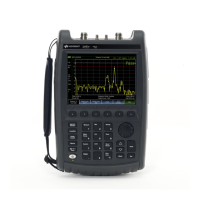2 Introduction to Programming
44 Keysight Models 6811C, 6812C, and 6813C Programming Guide
Headers
Headers are instructions recognized by the ac source. Headers (which are
sometimes known as “keywords”) may be either in the long form or the short form.
The SCPI interface is not sensitive to case. It will recognize any case mixture, such
as TRIGGER, Trigger, TRIGger.
Message unit separator The semicolons in VOLT:LEV 80; and PROT 88;
Root specifier The colon in PROT 88;:CURR?
Query indicator The question mark in CURR?
Message terminator The <NL> (newline) indicator. Terminators are not part of the SCPI syntax.
Long form The header is completely spelled out, such as VOLTAGE, STATUS, and DELAY.
Short form The header has only the first three or four letters, such as VOLT, STAT, and DEL.
Short form headers result in faster program execution.
Header
convention
In the command descriptions in Chapter 3, “Language Dictionary” of this guide, headers
are emphasized with boldface type. The proper short form is shown in upper-case letters,
such as DELay.
Header
separator
If a command has more than one header, you must separate them with a colon (VOLT:PROT
OUTPut:RELay:POLarity).
Optional
headers
The use of some headers is optional. Optional headers are shown in brackets, such as
OUTPut[:STATe] ON. As previously explained under “The effect of optional headers” on
page 39, if you combine two or more message units into a compound message, you may
need to enter the optional header.
